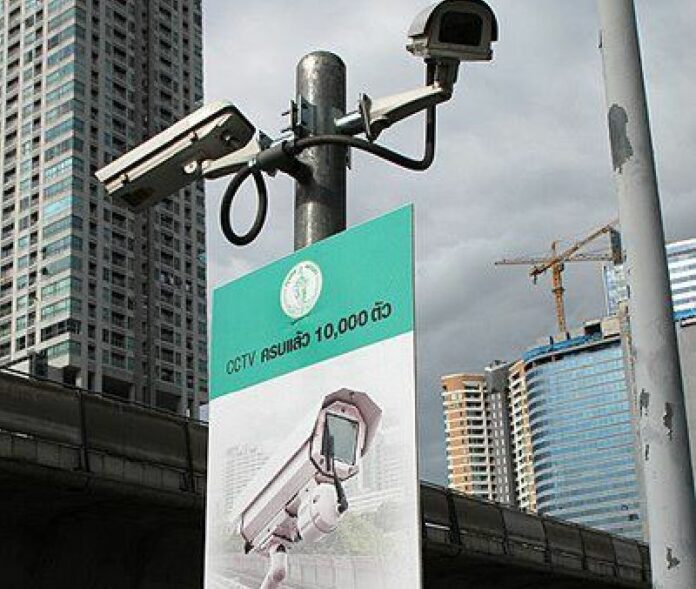
BANGKOK — When Miruntee Katethip went to city hall and asked to see security camera footage of the day her house in western Bangkok was robbed this past March, she was told only five of 26 cameras in the area worked correctly.
When police turned to city-operated CCTVs for leads in August after the greatest apparent act of terrorism in modern Thai history, the police chief said 15 of 20 along the suspected bomber’s escape route were broken.
While law enforcement has become more reliant than ever on such systems – running the tapes being the starting point of many investigations – doubts about the capital city’s network of cameras persist, four years after the embarrassing discovery that hundreds were just empty shells.
“As we all have seen from the Ratchaprasong bombing case, the police themselves said that no useful footage was received from Bangkok’s CCTVs”, said police Cpt. Jomdet Trimek, a lecturer of Criminology and Criminal Justice Administration at Rangsit University.
Jomdet said Bangkok’s implementation of a closed-circuit television system has been a failure and made law enforcement, already notorious for its inefficiency, even worse.
A month before a powerful bomb killed 20 people, mostly tourists, at the Erawan Shrine on Aug. 17, Jomdet had concluded in his second study on the issue that the public felt no safer than they did in 2010, despite the number of CCTVs increasing to 50,000 from 20,000. The reason? Most people assume they are either fake or broken.
The effectiveness of security cameras in reducing crime remains an unsettled debate.
However, Jomdet’s study found people in the capital said they would feel safer if they knew the cameras worked.
Feuding and friction over the issue between the police and city officials has not boosted public confidence.

The 2011 discovery of this fake security camera, the details of which were posted online to the popular Pantip forum, resulted in the admission that upward of 500 such fake cameras had been installed in Bangkok
Following the Aug. 24 accusation from former police chief Somyot Pumpanmuang that three in four city cameras were broken along the route taken by the suspected shrine bomber, city officials shot back a testy response complaining, of all things, that police had never “thanked” the city for access to its system.
Although Somyot was referring to a street leading away from the scene of the blast, an adviser to Bangkok’s governor said city hall found only four broken cameras of the 107 located at the intersection where the shrine is located.
The Bangkok Metropolitan Administration conceded that for every one camera in the area, there were four privately owned cameras, such as those operated by businesses or hotels.
It also became clear during the bombing investigation that a number of BMA-operated cameras recorded very low quality images compared to the high-definition cameras used in the private sector. But it would be impractical for the city to operate so many streaming, high-definition cameras, Rangsit University professor Jomdet said.
The issue spilled into the news again earlier this month when a former MP of the Democrat Party raised the issue.
“The BMA has a policy to install 100,000 cameras overall by 2019, spending more than 40 billion baht,” Watchara Phetthong said. “Now after installing 50,000 cameras, they already have a problem.”
Watchara called for party leader Abhisit Vejjajiva to remove from his post Bangkok deputy governor Amorn Kitchawengkul, who is in charge of the BMA program.
Whether for the sake of public interest or internal politics, Watchara pushed the issue using the case of Miruntee – the woman whose home was burgled – to illustrate the failure of Bangkok’s expensive surveillance system. Miruntee herself demanded the BMA be held responsible to the tune of 3.4 million baht for her lost property.
Since 2011, the BMA has reportedly spent 3.6 billion baht on camera systems.
Responding Wednesday, Gov. Sukhumbhand Paribatra, also of the Democrat Party, said city hall welcomes inspection of its system and said another 10,000 cameras would be installed within a year.
Professor Jomdet said while politicians wrangle over the issue, he wants to continue his study every five years until enough cameras and control rooms using reliable equipment have been installed, as he believes it will make the city safer.
“About the same size as Bangkok, London has 400,000 cameras,” he said. “If you’ve committed to using the camera surveillance system then you need to invest in it. But it will be a waste of money if you can’t build the trust.”















































